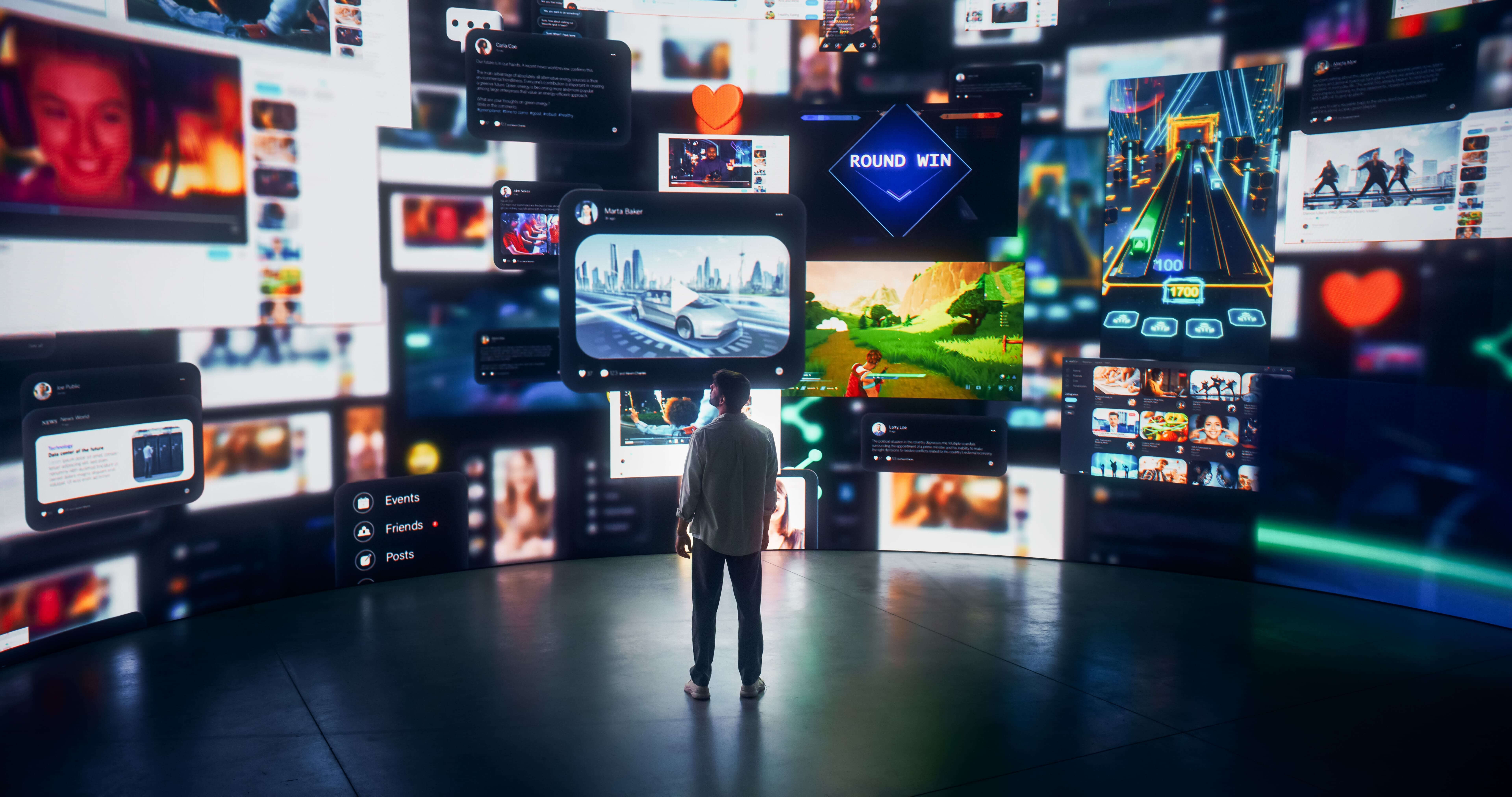Augmented Reality (AR) is undeniably one of the most groundbreaking technologies in the 21st century. Within the realm of digital marketing, AR has proven itself as an indispensable asset, elevating engagement levels and delivering unparalleled immersive experiences to audiences worldwide. This innovative approach allows brands to break away from traditional marketing paradigms and venture into a world where consumer interaction is the cornerstone. Let's embark on a detailed journey to understand how AR is reshaping the marketing landscape.
1. A Brief Introduction to Augmented Reality (AR)
At its core, Augmented Reality seamlessly blends digital content into our real-world environment, thereby augmenting our sensory experiences. This fusion of real and virtual creates a unique interface that's both interactive and dynamic. Unlike its cousin, Virtual Reality (VR), which immerses users in a wholly artificial environment, AR embellishes real-world elements with computer-generated enhancements.
2. The Marketing Renaissance: AR's Influence
Enhanced Interactivity & Engagement: Traditional advertising platforms offer a passive experience, with brands broadcasting their messages hoping to capture attention. AR transforms this one-way interaction. It beckons users to actively participate, engage, and even alter the narrative, creating a profound brand-consumer relationship.
Hyper-Personalization: One of AR's most promising features is its ability to tailor experiences for individual users. Whether it's showcasing a product in a user's favorite color or adapting content based on user behavior, AR ensures that marketing messages resonate on a personal level.
An Unforgettable Impression: The unique and interactive nature of AR ensures that campaigns aren't just seen; they're remembered. Such experiences often lead to word-of-mouth promotions, amplifying the campaign's reach and impact.
3. Iconic AR Marketing Campaigns: Learning from the Best
- Pepsi's Bus Shelter Magic: In a clever campaign, Pepsi transformed an ordinary London bus shelter into a window to the unbelievable, showcasing alien invasions, prowling tigers, and more. Passersby were treated to unexpected and delightful AR experiences.
- L'Oreal's Virtual Beauty: Venturing into the world of cosmetics, L'Oreal's AR app is nothing short of revolutionary. Users can experiment with makeup shades, styles, and looks, making online shopping as tactile as the in-store experience.
- IKEA's Digital Catalogue: The furniture giant, IKEA, introduced an AR app that allows customers to visualize furniture pieces within their homes. This aids in informed decision-making, reducing potential returns and enhancing customer satisfaction.
4. Crafting AR-centric Marketing Campaigns: A How-to Guide
- Billboards That Talk: Imagine walking past a billboard that springs to life, offering additional content, interactive games, or exclusive offers. AR can rejuvenate traditional print advertising, making it more engaging.
- Experience Before Purchase: From cars to gadgets, AR can facilitate virtual test-drives or product demonstrations, ensuring consumers know exactly what they're getting.
- Educational Packaging: Beyond aesthetics, product packaging can become a source of information. Scanning a product with an AR app can reveal tutorials, ingredient sources, or brand stories.
5. Overcoming AR Challenges
While AR holds immense potential, it's essential to navigate its challenges:
- Device Diversity: The vast array of consumer devices, each with different capabilities, can pose compatibility issues. Ensuring your AR experiences are accessible across devices is crucial.
- Content Excellence: Mediocre AR content can be counterproductive. Investing in top-notch graphics, animations, and sound is non-negotiable.
- User-Friendly Design: An AR experience should be intuitive. Complicated interfaces can deter users. Feedback loops, beta testing, and iterative design can help streamline user experiences.
6. Quantifying AR's Impact
Success measurement is paramount:
- Engagement Metrics: Beyond mere views, delve into interaction times, repeat uses, and user-generated content to gauge true engagement.
- Sales Conversions: For e-commerce platforms, tracking conversions post-AR interactions can offer insights into its efficacy.
- Brand Perception: Post-campaign surveys can reveal how AR influences brand perception, recall, and loyalty.
7. Gazing into the Future
The future is rife with possibilities. As AR technology matures, coupled with advancements in AI and machine learning, we'll witness even more personalized and real-time AR marketing campaigns. The integration of AR glasses into mainstream culture will further provide fresh platforms and opportunities for innovative campaigns.
Conclusion
AR is undeniably a formidable force in modern marketing. It offers a blend of interactivity, personalization, and novelty, challenging brands to innovate and consumers to engage in hitherto impossible ways. As we stand on the cusp of a marketing evolution, there's never been a more exciting time to delve into the world of AR and redefine consumer engagement. Embrace the future; let AR guide the way!




